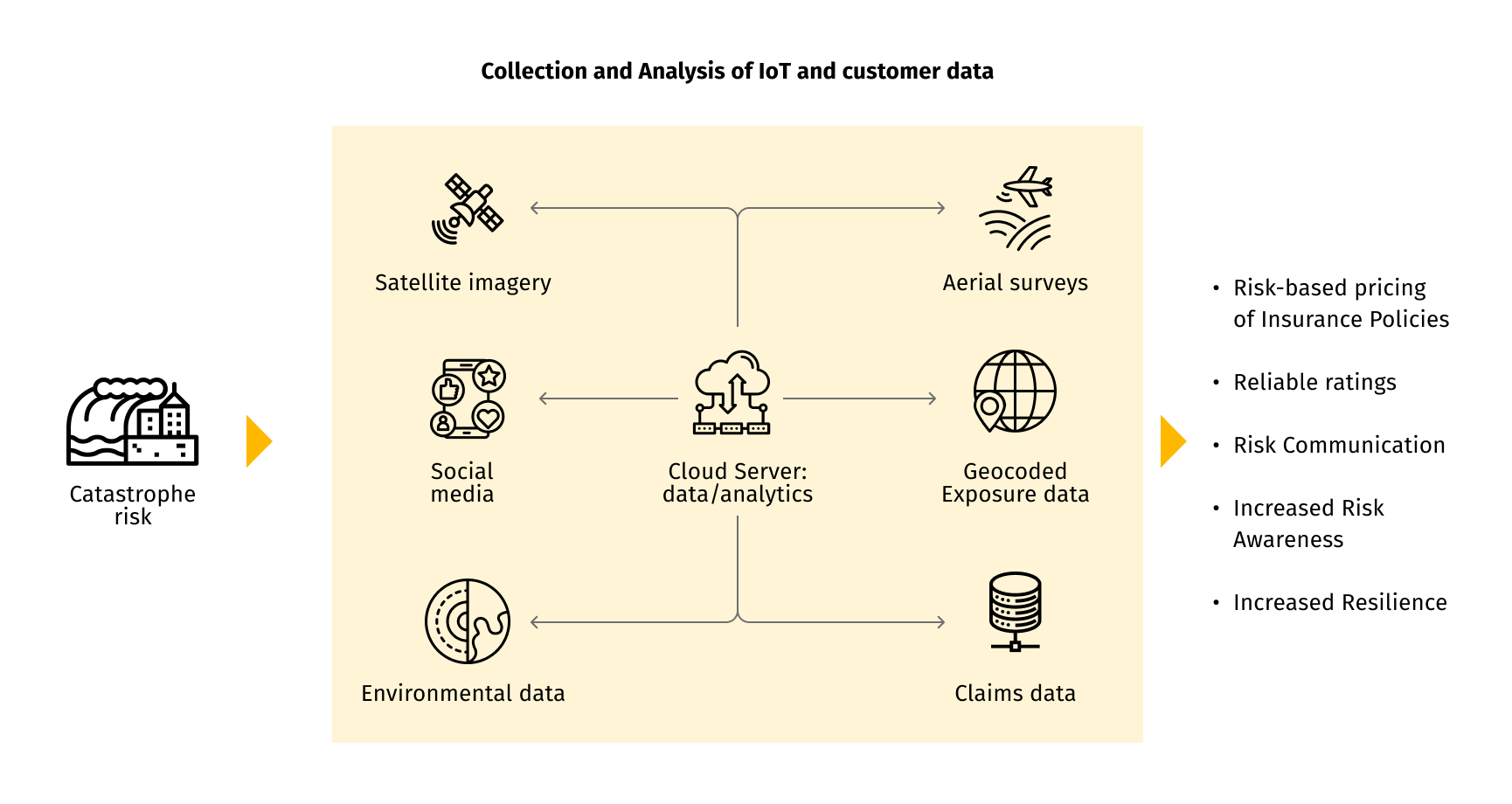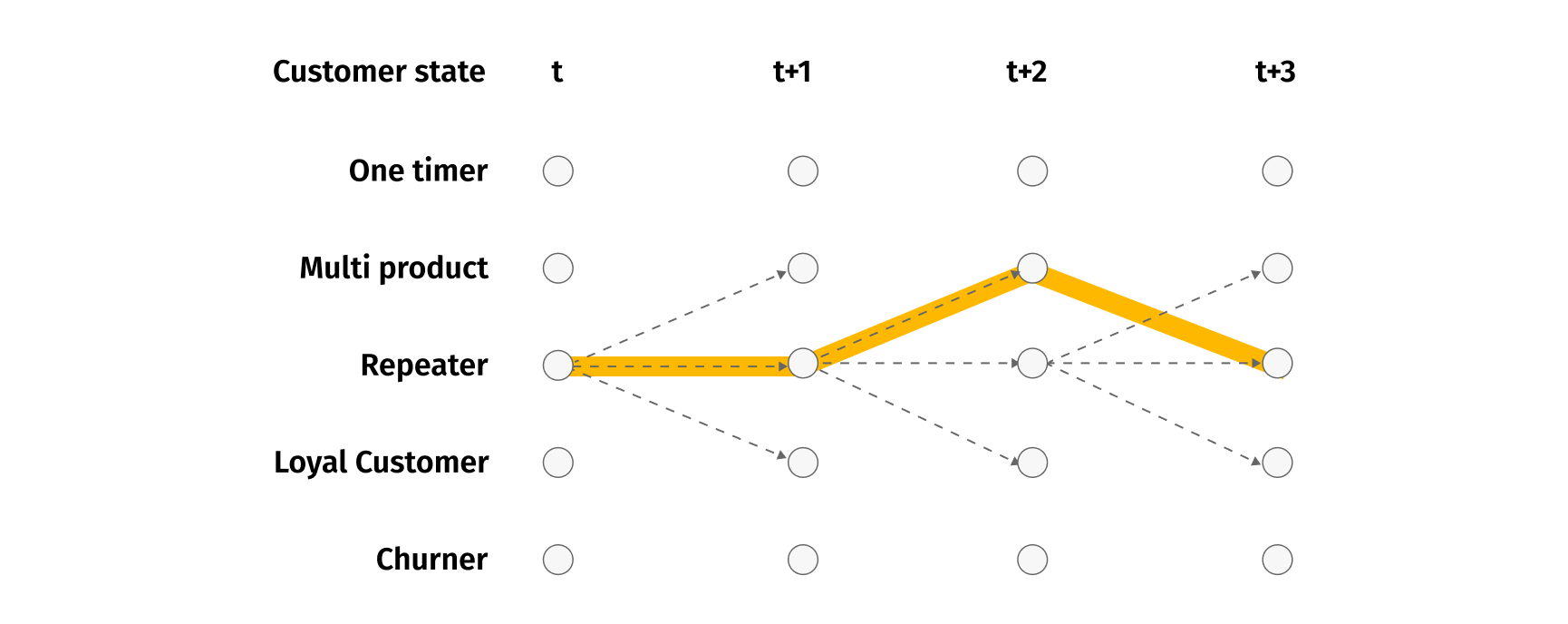
AI-powered risk prevention in the P&C Insurance industry
Preventing catastrophic claims using IoT and AI to predict risk
A catastrophic event can cause large numbers of policyholders to submit claims at the same time, putting a strain on insurers and increasing the risk for fraudulent claims. Such events include natural disasters such as tornadoes, earthquakes, and hurricanes, but also pandemics or acts of terrorism. With the use of Internet of Things (IoT) technology, artificial intelligence (AI) and machine learning (ML), insurers can take a more proactive approach to reducing policyholder risk.
CAT modeling
P&C insurers can better understand the personal risk to personal and commercial property by using Catastrophe (CAT) modeling. IoT algorithms quantify the likelihood of a catastrophic event and the intensity at which it might occur. From there, it can estimate the direct loss of life and property damage, as well as indirect losses, which include business interruptions, inflated cost of living, and other related problems that might arise in the event’s aftermath. The metrics of CAT modeling rely on historical data, such as weather patterns, but given the reality of climate change and unprecedented weather trends, that’s not always enough to be prepared. With IoT applications, affordable and scalable technology, such as LoRa, enables data transmission over a greater range with less power usage. This bridges the communication gap when Wi-Fi and cellular networks become vulnerable to failure during catastrophic events.
Drone technology
For high-risk industries, such as agriculture, leveraging IoT capabilities can help to make the claims process more manageable. For example, drone technology has become a staple of the P&C insurance industry because it makes the claims assessment process faster and more efficient. In the aftermath of a natural disaster, it is dangerous for a claims officer to venture into specific areas. Drones can enter these hazardous areas that humans cannot easily reach to collect valuable data instead.
Drones can also prove helpful even in less dire situations, such as examining a rooftop as part of a client’s home insurance policy. The drone assessment data is then fed into the AI system and processed into a claim. The use of drones streamlines this process, reducing the cost of conducting the assessment and, in turn, the cost of insurance policies over time.
Risk information can be used not only in the aftermath of a catastrophic event but also to identify early warning signs that can be communicated to policyholders in advance to prevent the full extent of potential damage to their property and lives. This is especially useful in areas at high risk for hurricanes, tornadoes, flooding, and other instances of extreme weather. By configuring specific parameters in the insurer’s API platform that correspond to each client’s profile, they can receive personalized notifications about an impending natural disaster. This allows them to put contingency plans in place, prepare evacuation routes, specialized response networks, and so on. Insurers can provide essential data points such as the distance to the closest hospitals, or, if a client is about to move, insurers can provide them with useful statistics such as local crime rates.

Claim fraud detection and prevention using AI / ML and anomaly detection
Unfortunately, fraudulent claims made to exploit insurers for financial gain have always been a major risk to the industry. According to Deloitte, insurance fraud costs P&C insurers around $30 billion annually. Insurance fraud comes in many forms, ranging from exaggerated claims (i.e., stating the value of a property as higher than it actually is) to false claims (i.e., an incident that never actually happened) and duplicate claims (i.e., submitting the same claim more than once). Not only does this lead to a loss in profit for insurers, but it also causes significant increases in customer premiums over time. When there is a catastrophic event, the risk for fraudulent claims increases dramatically.Fraud detection algorithms
It’s in both insurers' and customers' best interest to ensure that any fraudulent activity is detected and stamped out as quickly as possible. As an official partner of Microsoft Fraud Protection products, Grid Dynamics has considerable experience in equipping clients with a framework that detects and prevents fraud, safeguards customer data, prevents abuse of services, and maps out and investigates any potentially fraudulent cases.
The building blocks of an effective fraud detection solutions framework are based on the following points:
- Risk evaluation and control: much like insurers, a team of skilled engineers rely on all information at hand to assume risks and formulate the best action plan.
- Implementation of industry-specific algorithms: once risk evaluation is carried out, engineers can build solutions that combine multiple algorithms to streamline time spent on case reviews, avoid major revenue losses, and enrich policyholders’ overall experience.
- Establishing classic and emerging patterns: given that AI is able to process large swathes of data at a much faster rate, it is much easier to establish a baseline score for standard claims by analyzing both historical and real-time customer data.
- Real-time anomaly detection: with a fraud-detection system firmly in place, it is not only possible to detect anomalies early on but also flag certain policyholders as potential risks based on their profile and behavior patterns.
Natural Language Processing
AI-powered tools like Natural Language Processing (NLP) streamline the insurer side of the claims filing process. Through machine learning processes, NLP solutions enable computers to interpret language and recognize patterns and valuable insights. As a result, the AI can analyze a policyholder’s behavior and historical data, including previously filed claims and recorded conversations with customer service representatives, social media posts, emails, and so on, to discover anomalies or suspicious activity. In the past, claims agents would try to manually review hundreds, if not thousands, of claims daily. NLP accelerates that process and protects insurers against any oversight due to human error. If the system finds any suspicious-looking activity in a policyholder’s claim, they flag it for human review. Ultimately, this leads to quicker response times and improved customer service.
Predicting and preventing customer churn with NBA recommendations
Proactive customer intelligence solutions help with customer growth and retention by dramatically personalizing content and optimizing next best action. Grid Dynamics can help insurers manage all stages of the customer lifecycle, providing invaluable insights into churn drivers, customer conversion, and risk scoring through the use of big data analytics.
Leveraging data to improve customer experience
We’ve already established that automation permits insurers to work with unprecedented amounts of customer data. So, how do insurers figure out which data is most helpful in creating an insightful user experience for policyholders? The answer to this question lies in optimizing the Next Best Action Model. Implementing predictive analytics and modeling tools enables insurance companies to leverage data from other communication channels beyond the primary data on their internal services. Data can be classified into first-party and third-party data. First-party data refers to basic information about a customer, such as their name, age, occupation, income, and so on. Third-party data can be taken from customer service history, social media, IoT data sensors, and so on. This data also pushes insurers to take an omnichannel approach, meaning that clients can file claims, lodge complaints, or request services via their preferred channels and devices.
Automating the decision-making process related to the customer experience, personalization, message targeting, and analytics delivers solid, real-time results for both the insurer and the customer alike. Customer intelligence offers a more personalized user engagement and gives insurers better insight on how to interact with customers. In today’s highly-competitive market, insurers need to understand that there is no single definition of optimal customer service. Each client has their own specific needs, preferences, and trigger points.
Leveraging data to predict and prevent customer churn
In addition to offering a personalized and user-friendly service to their customers, insurers also need to recognize any of the warning signs that might indicate customer churn.
What causes customer churn? By leveraging customer intelligence and NBA recommendations, we can attribute churn to the following factors:
- Demographics and psychographics of the customer
- Customer transaction history
- Pricing of policy plans
- The customer’s economic situation
- More attractive offers from competing insurers
AI systems can also pinpoint events that might trigger customer churn, considering that customers themselves are not always so forthcoming about their reasons for leaving. Historical data is analyzed alongside events such as service outages, price hikes, or customer service history. With this data at hand, the system might flag a customer account so that the insurer can offer a personalized solution to maintain their business relationship.

Use of AI in Insurance: Summing up
Using AI in the P&C insurance industry strengthens the relationship between insurers and customers: it aids in risk prevention and fraud detection, reducing the time and money spent on the claims process. Moreover, AI systems can inform clients of disasters through predictive analytics and lessen property and personal damage risks.
Grid Dynamics is a digital-native technology services provider that accelerates growth and bolsters competitive advantage for Fortune 1000 companies. We have more than 15 years of experience in digital transformation and software innovation.
Interested in more details of how AI can help insurers stay ahead of the competition? Get in touch with us to start learning more!
